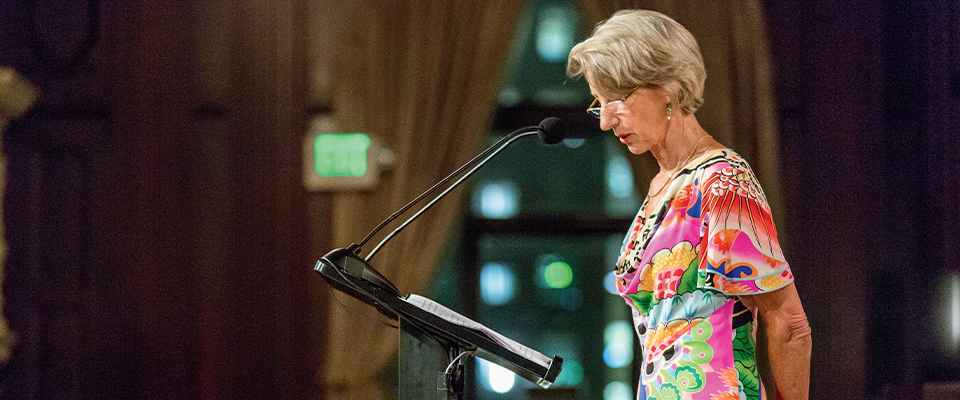Famed law school is now housed in “The Law Building”
ON THE MORNING OF THURSDAY, JANUARY 30, UC carpenter Joe Poppi chiseled away the name “Boalt Hall” from the façade of the UC Berkeley law school. It was the culmination of a long debate after revelations surfaced about the building’s namesake’s racism.
“There is no evidence that John Boalt himself … would remotely have supported the inclusive law school … we are so proud of today.” —Dean Erwin Chemerinsky
John Henry Boalt was a 19th-century attorney who, among other bigoted views, showed vigorous support for the Chinese Exclusion Act of 1882, which prevented Chinese workers from entering the United States. In an essay called “The Chinese Question,” Boalt wrote, “[T]he Chinaman has brought to us … all the vicious practices and evil tendencies of his home. … Caucasian and Mongolian races are … separated by a remarkable divergence in intellectual character and disposition.”
In his proposal to the naming committee, Berkeley Law Dean Erwin Chemerinsky concluded, “There is no evidence that John Boalt himself … would remotely have supported the inclusive law school and the UC Berkeley campus we are so proud of today.” Boalt’s principal legacy, the dean said, was “one of racism and bigotry.”
From the beginning, the removal of Boalt’s name was controversial. Hundreds of comments, both for and against, were left on the chancellor’s website by alumni, students, and professors. Several alumni suggested a compromise: Name the law school building after its actual benefactor—John Boalt’s wife. In 1901, Elizabeth Josselyn Boalt made a $100,000 donation to fund the construction of the University of California law school building in memory of her husband.
In the end, though, the committee voted unanimously to remove the Boalt name from the Berkeley Law building.

The case inevitably calls into question the names of other campus buildings, including LeConte Hall, where Berkeley physicist Ernest O. Lawrence first used his cyclotron to smash an atom.
The building was named for physicist John LeConte, who served as the University president from 1875 to 1881. His brother, Berkeley geologist Joseph LeConte, was a founding board member of the Sierra Club. While both LeContes were renowned for their scholarship, they were also former Confederates and slave owners, who continued to argue for the supremacy of whites. In his 1892 book, The Race Problem in the South, Joseph wrote, “the relation of master and slave, then, is a natural one” and asked whether “extermination [was] the inexorable fate of all the lower races?”
Already, two LeConte buildings in California have been renamed—the Sierra Club’s LeConte Memorial Lodge in Yosemite Valley and Berkeley’s LeConte Elementary School. Whether LeConte Hall will meet the same fate remains to be seen.
From the Spring 2020 issue of California.




















